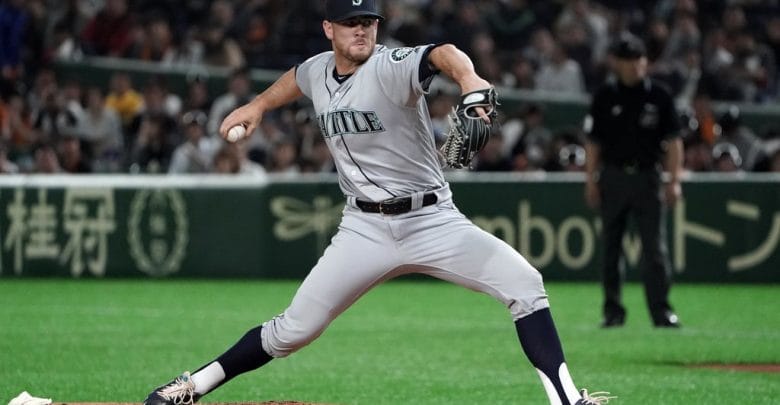
As the M.L.B. Season Opens in Japan, at Least the Dirt Is Familiar
It was a different story in 2000, when the Chicago Cubs and the Mets split a pair of games here in the first regular-season games outside the United States and Canada.
Aside from thrilling plays like Benny Agbayani’s extra-inning, pinch-hit grand slam for the Mets, that series included embarrassing moments that baseball would prefer not to repeat: Robin Ventura twice slipped in a batter’s box that was made of the softer dirt used in Japanese baseball.

Players described it as similar to the loose soil used with potted plants, and it caused more headaches when an all-star team came over for a postseason tour in 2004. Roger Clemens’s foot was sore and Dontrelle Willis developed pain in his back, Cook said, because they were sliding more than usual on the pitchers’ mound.
Cook was camping with his family in the Blue Ridge Mountains when the league summoned him to Japan in an emergency.
“They were all complaining about how soft the mounds were,” Cook recalled. “I said, ‘Well, we can fix that.’ I came over and whipped up a concoction that got them through the rest of that tournament.”
Since then, the league has taken greater steps to ensure that Leake’s experience is the norm. Cook estimated he had been to Tokyo four times since the games were announced last spring. In between, he spent time in London, Mexico, New Zealand, the Dominican Republic and Peru — among other places — to work on fields for games, clinics and other events over the past year. His challenge is to ensure that wherever the game is taking place, the field is always up to M.L.B.’s competitive and safety standards.
There are plenty of other issues to address besides the dirt. For this series, Cook’s work began on March 4 and included helping lay a new, previously planned artificial turf surface at the arena. The bases used in Japan are also fluffier and rise to a crown, while American bases are harder and flatter. They also anchor into the base pits differently, so Cook not only has to bring bases from home but also has to change the holes into which they are fitted.
Japan also uses 12 permanent nylon markers — four around each batter’s box and four around the catcher’s box — as guides for laying chalk lines around those spaces; in the United States, a metal template is brought out before each game for the markings. In past events here, M.L.B. catchers complained that the half-inch-high tufts were distracting, and they would pull them out of the ground and toss them away. Cook now stores one of his metal templates at the Tokyo Dome, along with an array of other handy supplies.
Cook’s job may be easier in Japan than it is almost anywhere else because of baseball’s deep history here. The 12 tons of dirt for this series is a smaller shipment than previous ones because he has been able to find suitable domestic materials to complement his imported soil.
But when the Yankees and the Red Sox play a series at London Stadium in June — M.L.B.’s first regular-season games in Europe — Cook will need to export 300 tons of dirt to England to build a field entirely from scratch.
With his vast experience, Cook will be up to the task, but he noted that there was one item in his field-conversion process that still bedevils him.
While he has become an expert in the nuances of importing American soil products through customs in many countries, he estimated that Japanese security agents had confiscated seven metal tape measures from him over the years. This week, he vowed, he would remember to tuck it into his checked luggage after the Mariners and the A’s are finished.
